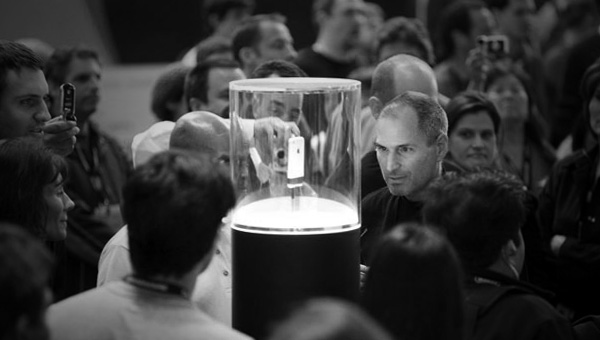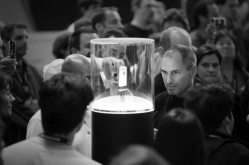The future of computing

What’s the next big thing in the technology industry. I glance down at my electronic devices and wonder; do I really need to spend money on another product? Why can’t one device just do everything I need, for a long period of time?
The catalogue of electronic products is expanding every single day, and every part of the technology industry is trying so hard to find the next phenomenon, the next industry benchmark, the next source of revenue. There’s no question that the role of technology is consistently changing, and our social behaviors with it, but as they expand diversity, potential scatters, and progress loses pace.
There are fortunately a few companies that give us a glimpse of the future; these are the industry’s roadmap, and Google and Apple are arguably the leading candidates. Google is continuing to expand internet services, increasing user convenience, and Apple is pushing innovation on interaction and distribution. There are other research being commenced throughout the sector, but frankly not a great deal is offered to the public.
The next big thing however, is the shift towards what is cloud computing; processing and storage being no longer local, but personal files and applications located solely on the internet, the cloud. This means that the users and their data will no longer be restricted to a single device, or a single area of access, the same information would be remotely accessible even on portable devices and home appliances, directly and remotely from the cloud.
This is not just having our mail on Gmail, our contacts on Facebook, or our photos on Flickr. The role of the computer completely dissolves into internet applications. The restrictions of hardware should no longer apply, nor are there compatibility issues, or upgrades. Resources are always readily available too, shared in fact, meaning significantly less time and resources wasted even from the get-go. The internet browser more-or-less becomes the operating system; think Google Chrome or Safari.
The problem is privacy. No one is openly willing to offer private information on a remote domain, and this is why some form of private storage is here to stay. In fact there will always be a need for a local workstation, because the internet is simply not reliable, nor is the connection to it. There hence is need for a local workstation, but in fact just one; the hub of a local network cloud.
The physical representation of the computer should therefore be merely a thin-client, because there is no need for intensive on-device processing or storage, all is rather, remote on the local hub. Local clients feed off the hub for all that is necessary, applications, data and media, but in a relation no different than a wired display we know and understand today. The hub itself is of course connected to the cloud.
But what happens when you lose connection? Google Gears offer the foundations of a potential solution. What Gears does is off-load the internet application onto local storage, meaning being able to use Google Docs or Gmail seamlessly through the browser even offline. Expand this philosophy for every internet application, suites like MobileMe or iWork/Acrobat, and you have a thorough structure for cloud computing.
The departure is that because the core of the computer is remote, even locally, the physical client is no longer constrained. Interface can be designed for natural human intuition, being managed through voice, touch and gestures rather than typing and the traditional GUI. The device is free of technical restrictions too, such as having to sacrifice power for portability, meaning a resolution-independent device having access to the same applications and capability.
There is surely only need for 3 displays; a small on-the-go for portability, a workstation for tedious tasks, and a large television-equivalent as the media-center, but of course the fewer the better. The mobile device is what smart-phones are today, but more. There are no technical restrictions, well except for battery-life, but endless potential. Mobile device with the power of a workstation, being able to collaborate live throughout the cloud.
Internet applications are sold and broadcasted from the cloud, no different than Gmail or content distribution models like App/iTunes Store or Steam, and updates are made available immediately, pushed directly to clients. The same device open to applications that replace TiVo or Netflix, but forget about proprietary hardware. A single adaptable device being able to handle everything I need, for a long period of time. This is the future of computing.
The future of computing is modeled from technologies available today. iPhone, Android and the Palm Pre, thin-clients feeding off the content-rich internet, are emerging as fundamental foundations. Because workstation is no longer constrained by hardware, what is needed is a tablet-like thin-client for the mobile intensive.
The future is also context and location aware, being able to receive relevant information depending on location and context, but let’s not look too far ahead of ourselves shall we?
1. Google plans to make PC history, The Observer.
2. What will Google’s GDrive mean for computer design, Design Week.
3. The GDrive versus the future of the PC, PC Magazine.
4. Steve Jobs at Macworld 2007, Peter Belanger, Macworld
-
Fantastic post. Couldn’t find much I don’t completely agree with!
-
Wonderful post. Yesterday I’ve read an article on Wired Italy that talked about Facebook’ future plans. I think that also Facebook could play a strategic role in the web search information.
Michele.








